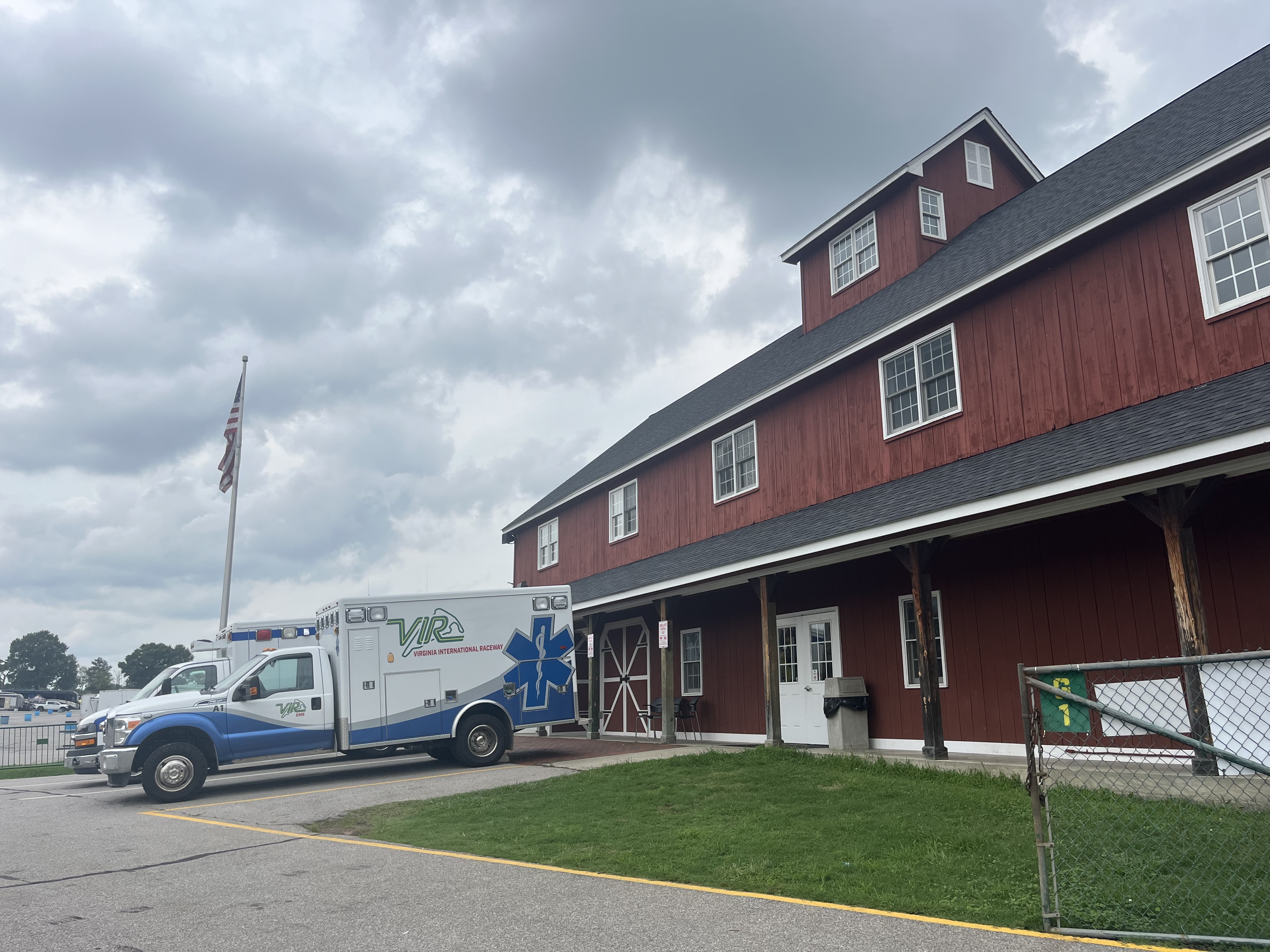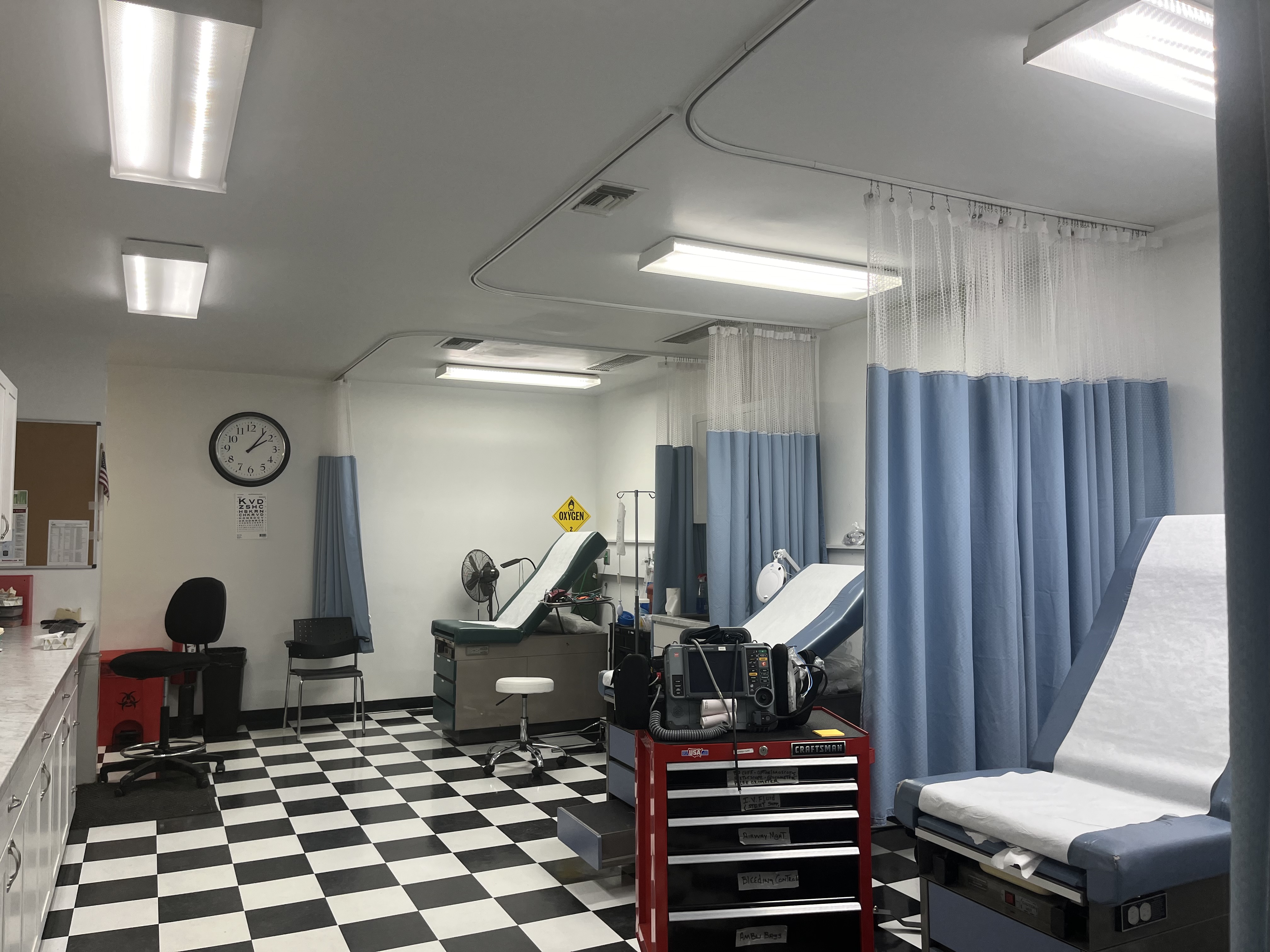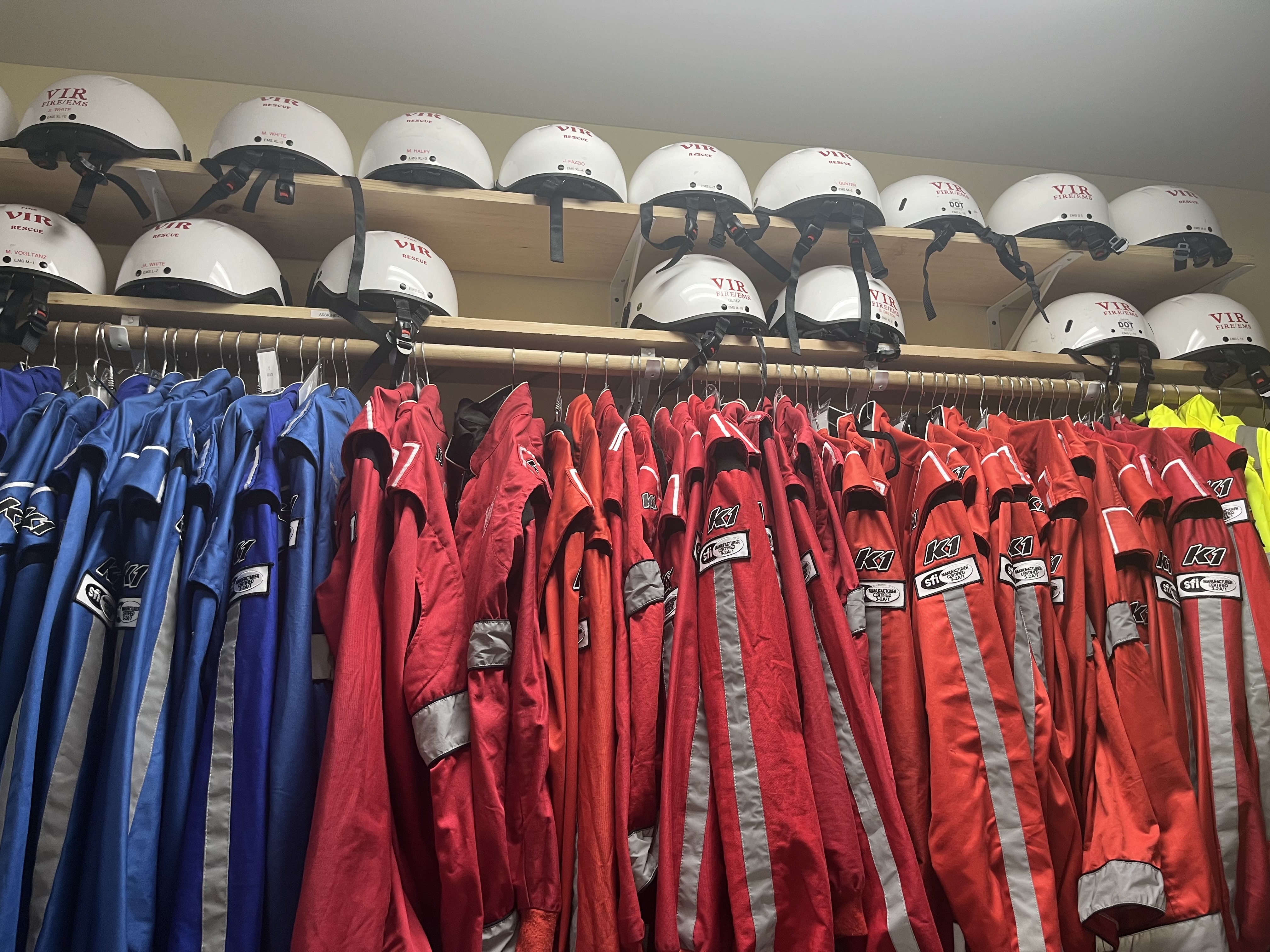Near the end of an April workday in 2022, the Virginia International Raceway fire and rescue team was notified that a racecar driver had fallen and hit his head just after getting out of his vehicle.
The driver had collapsed while talking to his pit crew, and the response team soon learned that the situation was more serious than a simple fall.
“We were all packing up in order to go home, and we were almost out the door when we heard that someone had fallen,” said Corey McBride, co-assistant director of fire and rescue at the raceway.
One of the ambulances that hadn’t packed up for the day responded to the call, and the team quickly radioed for additional help because the driver had gone into cardiac arrest.

This caught McBride off guard because the raceway’s on-site fire and rescue staff typically respond to fire and trauma emergencies more often than medical emergencies, he said.
“I remember feeling surprised that that’s what was actually going on. But from there, muscle memory kicked in,” he said.
McBride arrived at the scene, where emergency services staff had already begun CPR. He helped get the driver loaded into an ambulance so he could be taken to the hospital in Danville.
“We got him back,” said Billy Scearce, also co-assistant director of fire and rescue. “He lived and still comes here for races. He sent a real nice thank you letter for saving his life.”
VIR, which this weekend hosts the IMSA Michelin GT Challenge and Virginia is for Racing Lovers Grand Prix — and thousands of spectators — is one of the few tracks in the country with an on-site EMS team year-round. This has been the case since before Scearce started working at the raceway 21 years ago.
Most other raceways subcontract volunteers for rescue services for their handful of yearly events. But because VIR operates much more frequently than other raceways — with activity on at least part of the track 10 months out of the year — in-house fire and rescue is an important service, he said.
And having a dedicated EMS staff makes a world of difference when there are emergencies on the track, said McBride.
When the driver went into cardiac arrest, VIR staff quickly called for one of the six raceway ambulances.
“Billy came over the radio and said, ‘An ambulance is needed in this spot,’ and everyone knew where to go,” McBride said.
More common than heart attacks at VIR are car fires, grass fires and rollovers, McBride said, though these emergencies still need rapid attention.
The next-closest fire department is about 25 minutes away from VIR, which sits between Danville and South Boston in Alton.
“We’re so rural out here,” McBride said. “There’s a sense of security knowing that if something happens, all they have to do is call us on the radio and we’ll be there.”
Southside Virginia, like many other rural regions, has been experiencing challenges around recruiting and retaining emergency services staff, both paid and volunteer.
The VIR EMS department is no exception to this, McBride said, though he added that the unique experience of working at a racetrack venue does attract lots of candidates — especially because all of the EMS staff is paid by VIR. 
Dedicated emergency services
Because the fire and EMS department is on-site and the staff is familiar with the course, response times are fast, McBride said.
Rescue vehicles can get from one of VIR’s paddocks to another on the track — a distance of about a mile and a half — in less than 60 seconds. Off the track, this distance is about 2.5 miles and takes closer to three or four minutes, McBride said.
“We have the same group of folks who work this same track every day,” he said. “We know where to go without anyone telling us where to go, we know where to get ready, we know who’s getting ready, and we know the best ingress and egress.”
The staff doesn’t need to undergo any special training to work at a racetrack, Scearce said, though candidates do need the required certification to be considered. Then they will be vetted by either Scearce or McBride.
Fire certifications are not state-specific, unlike medical certifications, Scearce said. And because VIR is so close to the North Carolina state line, some staff members have North Carolina medical certifications. McBride helps these folks go through a process to be allowed to operate under the Virginia protocols, Scearce said.
There’s also an on-site care center at VIR, which functions much like an urgent-care facility and is staffed almost daily by a paramedic. For big events, doctors and nurses are often standing by at the care center, too, Scearce said.
But there are some services that the care center can’t provide. Sometimes, people need to be taken to a hospital.
“We don’t have x-rays or any kind of imaging on the property,” McBride said. “Anything that requires any kind of imaging, they have to be seen at a higher level of care.”
Injured drivers usually don’t want to be taken away by ambulance, because all activity on the track has to stop if the ambulance that’s dedicated to the event is in use, he said.
“One of them told me they don’t want to be the one to shut down the track,” McBride said. Instead, drivers often take themselves to the hospital in their personal vehicles or have a friend drive them.
But in severe cases like crashes during motorcycle races, other transportation is required.
“For motorcycle groups, we occasionally fly them out because their trauma is usually pretty serious,” Scearce said. “We’re lucky because we have fire and EMS staff on our trucks. … Once we get there, we figure out pretty quick that it’s pretty serious trauma. Within 25 minutes, we’ll have a bird on the ground to get them flown out to a trauma center.”
These emergency services are available not only to drivers and their crews but also to spectators.
“When we have spectators, we have a separate ambulance dedicated for them, so it doesn’t take away from the track,” McBride said. “We’re still able to provide care to both without raising concern.” 
Staffing
VIR has about 87 staff members on its emergency services roster, which includes fire and EMS personnel.
“Some of our folks are only EMS, some are only fire, but most are both,” McBride said. “And we have a range of provider levels including EMT, intermediate and advanced paramedics.”
All of these positions are paid by VIR and are part-time, so staff are often affiliated with other rescue services, Scearce said.
This means that working at the racetrack is often a welcome change of scenery.
“They love working here,” Scearce said. “This is a whole different arena as far as fire and EMS. It’s not like your regular job at a fire station or with a rescue squad.”
Depending on what events are going on at VIR, it can even be a rest day for folks, he said.
“Some days like today, they can recharge their batteries,” Scearce said. “Other days, we’re pretty busy all day.”
On busy days around large events, the VIR department will staff up and pay outside fire and EMS personnel to bolster their numbers if necessary, McBride said.
“We still have our scheduling struggles,” he said. “Because yes, we have 87 employees, but of those, about 80 of those work full-time jobs. There may be days where we have 30 people available to work, and then the next day, we may only have seven.”
And the venue accommodates employees’ schedules whenever possible, Scearce added.
“Just tell us when you can work, and we’ll make it happen,” he said.
Most of the fire and rescue staff members at VIR have been with the venue for at least a year, but McBride said they’re always looking to hire more “just to help bridge some gaps.”
McBride himself has been working with VIR EMS for just over three years. He also works for fire and rescue departments in Pittsylvania County and Caswell County, but a friend who worked at VIR suggested that he look into taking shifts at the raceway as well.
“I just fell in love with it,” McBride said.
One perk of working with VIR is that the venue often pays for recertifications or continued training for its fire and rescue staff, he added.
This ensures that the raceway can maintain its high standard of care, something it has built a reputation for, McBride said.
“We hear compliments from drivers from all over the country because of the level of care and what we do for the drivers and their teams when they get here,” he said. “Whatever you throw at us, we got it.”



